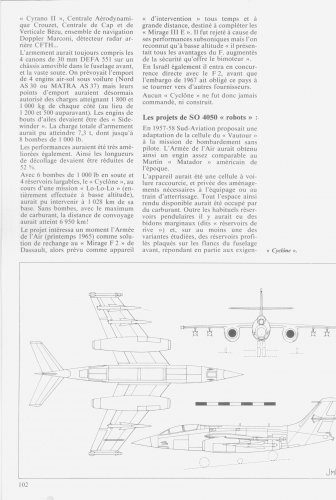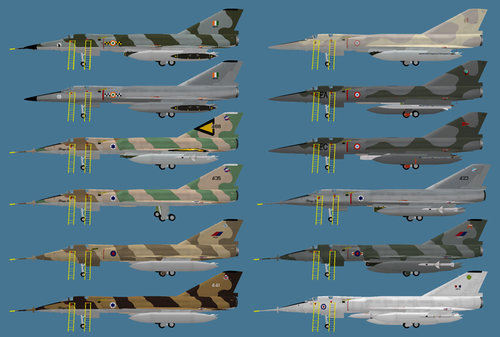As said in the title.
http://spotaero.blogspot.com/2013/05/la-genese-du-dassault-mirage-iv.html
The Mirage IV-01 and Mirage IV-A were powered by Atar turbojets, and needed C-135 tanker to strike anywhere in the Soviet Union (bar one-way trips to Moscow)
This was considered too small so late 1958 a scaled-up Mirage IV-B was requested: it grew in size to B-58. A 4-atar was rejected as too different, so it would be a twin jet, but SNECMA was unable to pull a viable engine. so France turned abroad, and considered four engines
- PS-13 Iroquois
- RB.142R Medway
- Olympus
- J-75
IOTL they went with the J-75, and SNECMA traded 10% of its shares for a licence. Soon De Gaulle realized that american engines meant the bombers could be grounded by lack of spares, so the partially build IV-B was scrapped, in favor of an aerial refueling IV-A. Tankers considered were others Mirages, Vautours, and finally, C-135FR.
Whatif SNECMA went for the Olympus or Medway, that is, the British way - Rolls Royce or Bristol ?
Both options have quite fantastic whatif potential
- Olympus of course screams CONCOOORDE and surely enough, the Mirage IV-B would be a 1/3 subscale Concorde, and a very useful testbed.
- such machine could butterfly the TSR-2 and replace the V-bombers. With TSR-2 avionics it would be one hell of a world better: a Franco-British Tu-26 Backfire a decade before the Tu-26.
- Medway screams... VIGGEEN, since the Swedes badly wanted it for SAAB new fighter. If the french rescue it for their own bomber, we will get happy Swedish and perhaps a different aircraft.
Mirage IV* is different: it is the Mirage IV-A with Spey, in 1965-66, long after that POD. Astonishingly enough, both airframe and engine are... a subscale Mirage IVB, and subscale Medway ! How about that.
http://spotaero.blogspot.com/2013/05/la-genese-du-dassault-mirage-iv.html
The Mirage IV-01 and Mirage IV-A were powered by Atar turbojets, and needed C-135 tanker to strike anywhere in the Soviet Union (bar one-way trips to Moscow)
This was considered too small so late 1958 a scaled-up Mirage IV-B was requested: it grew in size to B-58. A 4-atar was rejected as too different, so it would be a twin jet, but SNECMA was unable to pull a viable engine. so France turned abroad, and considered four engines
- PS-13 Iroquois
- RB.142R Medway
- Olympus
- J-75
IOTL they went with the J-75, and SNECMA traded 10% of its shares for a licence. Soon De Gaulle realized that american engines meant the bombers could be grounded by lack of spares, so the partially build IV-B was scrapped, in favor of an aerial refueling IV-A. Tankers considered were others Mirages, Vautours, and finally, C-135FR.
Whatif SNECMA went for the Olympus or Medway, that is, the British way - Rolls Royce or Bristol ?
Both options have quite fantastic whatif potential
- Olympus of course screams CONCOOORDE and surely enough, the Mirage IV-B would be a 1/3 subscale Concorde, and a very useful testbed.
- such machine could butterfly the TSR-2 and replace the V-bombers. With TSR-2 avionics it would be one hell of a world better: a Franco-British Tu-26 Backfire a decade before the Tu-26.
- Medway screams... VIGGEEN, since the Swedes badly wanted it for SAAB new fighter. If the french rescue it for their own bomber, we will get happy Swedish and perhaps a different aircraft.
Mirage IV* is different: it is the Mirage IV-A with Spey, in 1965-66, long after that POD. Astonishingly enough, both airframe and engine are... a subscale Mirage IVB, and subscale Medway ! How about that.


